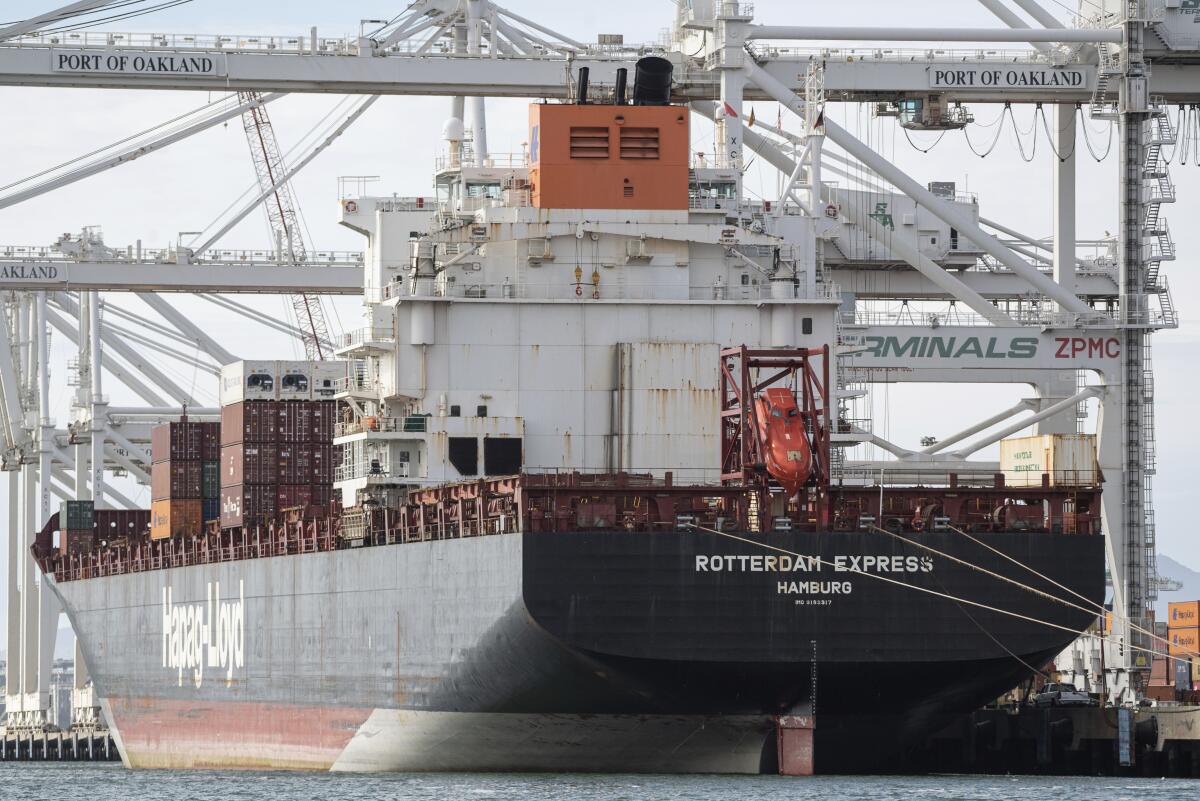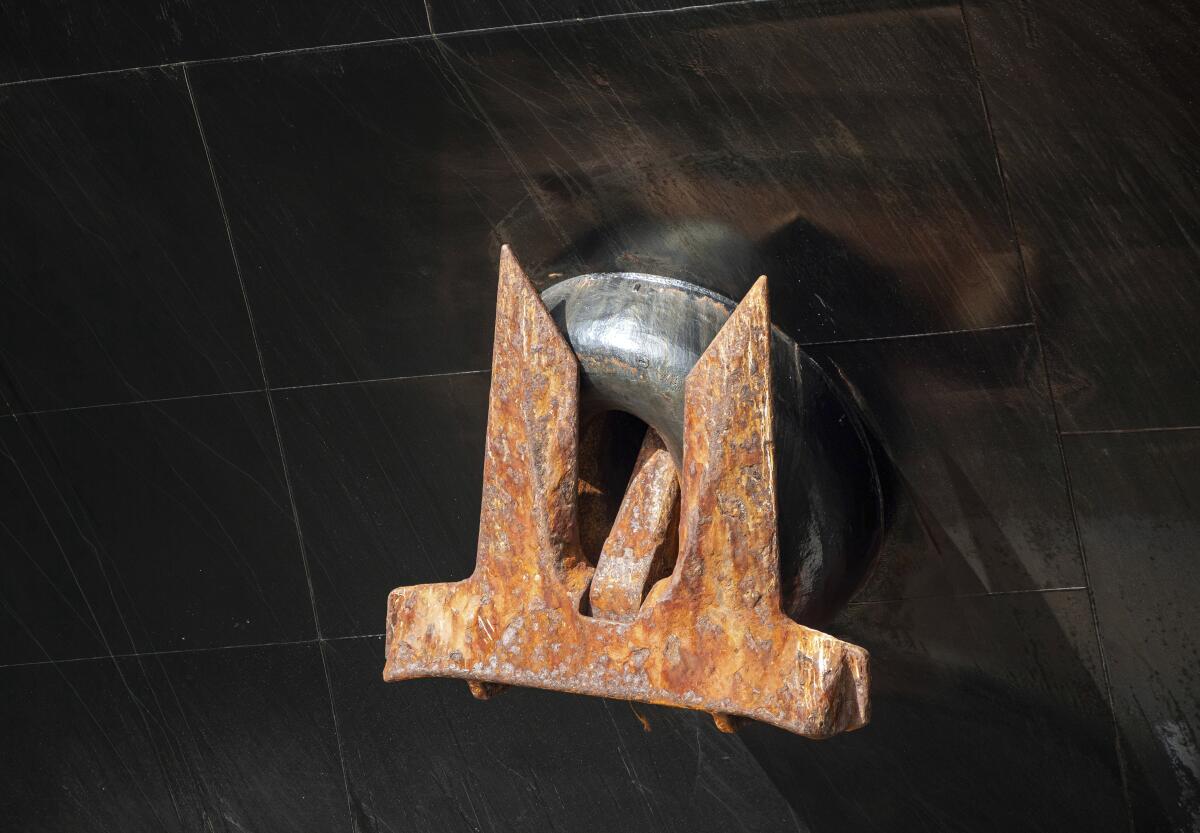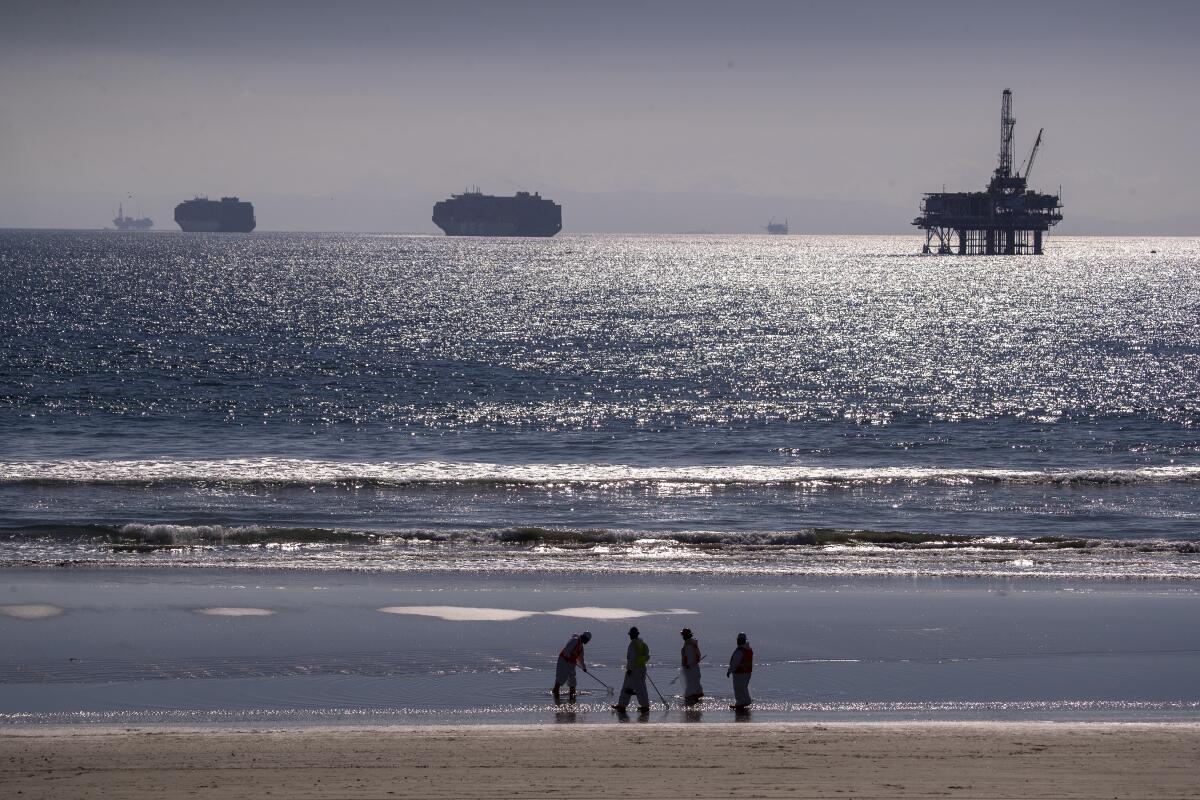German ship no longer under investigation in Orange County oil spill, company says

- Share via
The Rotterdam Express, the massive cargo ship that the U.S. Coast Guard boarded Wednesday in connection with the Orange County oil spill, is no longer under investigation, a company spokesman said.
Hapag-Lloyd spokesman Nils Haupt said in an email Thursday that the Coast Guard told the company by phone that the ship is no longer under investigation. The ship was released and is en route to Mexico, he said.
The Coast Guard did not immediately respond to a request for comment.

Here is what we know:
Was the Rotterdam Express the only ship of interest?
Federal officials have largely been silent about the ongoing investigation or any ships that may be of interest. But Skytruth, a nonprofit organization that uses satellite technology to track environmental issues, found another ship that had passed over the pipeline Friday morning, hours before the spill was detected. That ship, the Zim Sao Paolo, did not drop anchor near the pipeline but may also be a vessel of interest to investigators because it crossed the pipeline near the break, and also seemed to make an erratic movement.
The owners of the ship, Danaos Corp., based in Greece, did not immediately return a request for comment.
Why was the Rotterdam Express being examined?
The container ship was anchored in the area of the pipeline before the spill was discovered, according to satellite data. It was in the closest anchorage spot to the pipeline.
Investigators continue to zero in on a ship anchor as a possible cause. The shipping channels off Los Angeles and Orange counties have been jammed for months because of gridlock at the ports, forcing more ships to lay down anchors near pipes that move oil from offshore platforms onto land.
Where was the Rotterdam?
John Amos, president of Skytruth, said his firm has been analyzing data of ship movements Friday night, when the spill was detected.
Skytruth concluded that the Rotterdam Express was never closer than 1,500 feet to the line, according to satellite data. Instead, the ship kept to a semicircular pattern that would be expected of an anchored ship moved by wind and current. That distance, Amos said, makes it unlikely that its anchor could be the culprit.
He added that the actual location of the pipeline could differ from what is shown in federal mapping data. Amos said the 40-year-old line could have shifted over time, moved either by natural events or other anchor strikes that didn’t cause leaks, with the change going unnoted in official sources.

What does the Rotterdam’s owner say?
The company said Wednesday that the container ship was anchored in the vicinity of the oil spill but was “pretty far away from the pipeline.”
“During the period in question the vessel has not moved from anchorage and has not passed over the pipeline,” Haupt said in a message to The Times on Thursday morning. Haupt added that no crew aboard the ship had seen any oil but the firm was cooperating with investigators.
Some marine traffic reports showed the Rotterdam Express moving away from its anchorage shortly after its September arrival, drifting a few thousand feet before returning to its assigned spot. That movement, provided by the satellite-tracked beacon every ship is required to have, would have taken it across the pipeline.
Hapag-Lloyd is aware that some marine traffic information showed that the Rotterdam Express had moved while it was anchored, but that “seems to be wrong,” Haupt said. The ship’s captain has provided logs, updated hourly, showing the ship did not leave its anchorage place for several days, he said.
More to Read
Sign up for Essential California
The most important California stories and recommendations in your inbox every morning.
You may occasionally receive promotional content from the Los Angeles Times.













